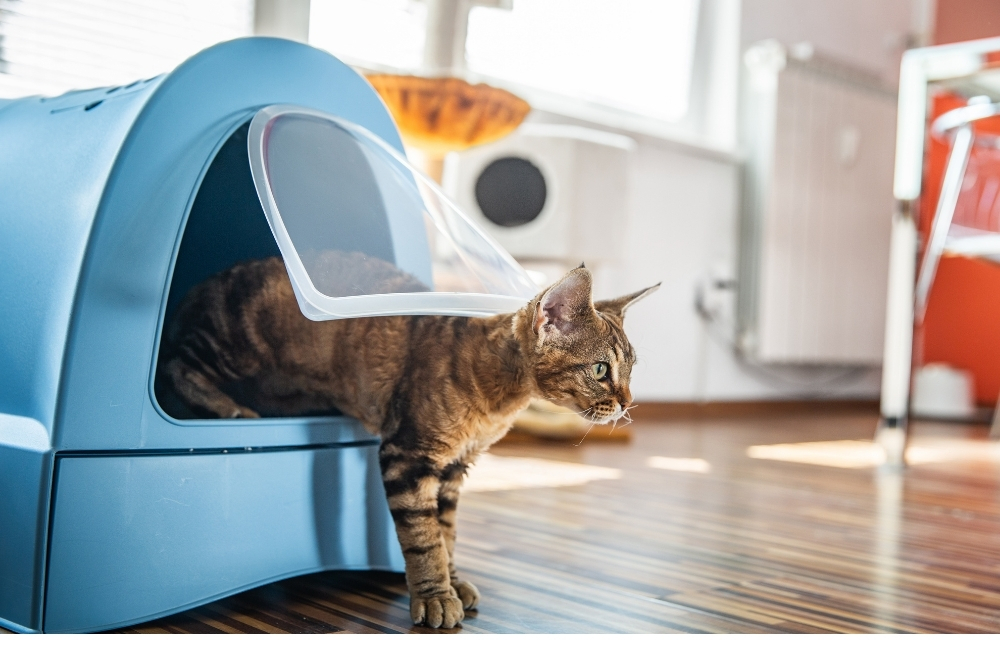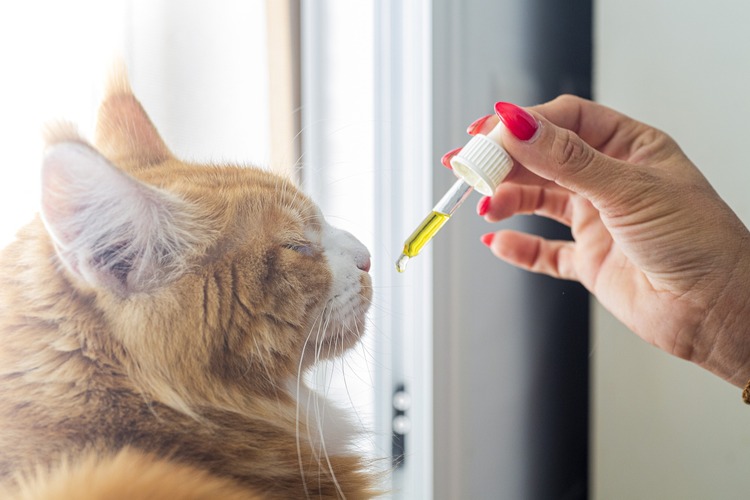Whenever we are in pain, we can communicate and even get medical attention from a doctor. However, the same rule doesn’t apply when a dog is in pain.
Dogs often suffer in silence unless the owner or someone else can tell they are in pain. You need to always be on the lookout to spot when your lovely pet is in pain and needs your help.
Below we highlight some of the subtle signs that can help you tell if your dog is in pain.
How to Tell if your Dog is in Pain
1. Excessive Vocalization
Even when your dog is trying to be tough, they tend to be more vocal than usual. A hurting dog may express this vocally in several ways:
- Whimpering
- Whining
- Yelping
- Groaning
- Grunting
- Howling
If your dog is vocalizing more than normal, you may need to check what’s up with your dog by visiting a vet.
2. Antisocial or Aggressive Behavior
When a dog is in pain, it will try to protect itself by staying away. You will notice that your dog might stop running to greet you at the door, often try to avoid contact, being reluctant to walk, doesn’t want to be held or picked up, and aggressive tendency especially when its a friendly dog. Any noticeable change in behavior can be a cause of concern.
3. Constant Grooming
Dogs in pain will often self-groom. You might notice they are obsessively licking their paws to soothe themselves. Also, you could notice your dog biting or often scratching a particular part of its body. When a dog is in pain, its instincts will be to clean and care for its wound by licking. If you notice excessive self-mutilation or that its coat lacks its normal shine, you need to seek medical help from the vet.
4. Heavy Panting or Altered Breathing
Dogs in pain will often have an increased pulse rate. The rate is often seen speeding up when touched or moved on the painful area. You may also notice that your dog has not been exercising but still, it’s panting. When you notice that consult your vet to check its pulse rate.
5. Restlessness or Signs of Agitation
Restlessness is also another indicator your dog is in pain. Whether its a belly ache or aching tooth or ear infection, you will notice that your dog is sleeping a lot, pacing back and forth, and is constantly uncomfortable.
6. Withdrawing or Seeking Affection
Some dogs tend to stay away from their owners when they are in pain. Other dogs, on the contrary, constantly seek affection from their owners. If you notice a sudden shift in affection then you need to seek help from a vet.
7. Differences in sleeping, drinking, and eating
Dogs, when they are in pain, tend to sleep a lot. They are doing either as part of the healing process or it’s difficult for them to move or to be active. Loss of appetite and changes in the amount of intake of water shows that something is wrong with your dog.
When your dog is in pain it may also experience difficulties eating or moving. If you notice that your dog has a disinterest in food, you need to visit a vet as quickly as possible.
Common Conditions That Cause Pain for Dogs
1. Bone Cancer
Cancer is the leading disease that kills dogs. The most fatal cancer in dogs is the Osteosarcoma. It primarily affects a dog’s front and back limbs and other bones like the upper and lower jaw, ribs, and facial bones. Dogs are often in great pain when suffering from bone cancer. Signs include;
- Lethargy
- Limping
- Weakness
- Swelling of the upper and lower jaw and along with the ribs
- Lameness
- Lack of appetite
- Difficulty breathing
2. Arthritis
This is a joint inflammation disease and is also known as Osteoarthritis. Smooth cartilage that allows joint movement breaks down causing a painful bone-on-bone rubbing and inflammation.
Signs
- Difficulty moving
- Limping
- Lameness
- Extended sleep
- Licking, chewing or biting at the area of pain
3. Pancreatitis
When the pancreas becomes inflamed, it’s likely due to ingested fatty food or side effect of medication that leads to sharp abdominal pain to your dog.
Signs
- Diarrhea
- Vomiting
- Loss of appetite
- Reacts in pain when the stomach is examined
4. Intervertebral Disc Disease
The spine has discs that act as shock absorbers to help protect the spine. Intervertebral Disc Disease affects a dog’s spine in the back or neck which is painful. It can lead to permanent spinal cord damage causing temporary or complete paralysis.
Signs
- Reluctant to rise or move
- Stiffness in the head, neck, and back
- Lameness
- Yelping when touched
- Hunched posture
- Tremors
- Dragging one or more legs when walking
5. Gum Disease
Periodontal disease is one form of dental disease that affects the teeth and the teeth-supporting structures like the gums. This may lead to tooth decay and painful tooth loosening and loss.
Signs
- Tooth loss
- Loosening teeth
- Excessive drooling
- Bleeding gums
- Reluctance to eat
- Inflamed and swollen gums
- Bad breathe
- Discharge from the gums
- Stained teeth
RELATED: How to Tell if Your Dog is Pregnant
How To Comfort a Dog in Pain
If your dog is in pain, you need to do at least one of the following to help reduce or get rid of the pain altogether.
1. Consult your veterinary
You must take your dog to get a complete physical examination including lab and blood tests or x-rays if needed. If there is a problem your veterinary will recommend physical therapy, drug treatment or surgery, or even a combination of all.
If your dog requires surgery you could ask your vet what form of pain management pills will be provided. Give your dog the correct dose prescribed by the vet.
2. A head-to-toe massage
This will help your dog to feel relaxed and soothed. This form of petting will help you bond with your dog and you will be able to check any bruises or bumps in your dog’s body.
Also, one can use essential oils to massage and soothe their minds when your dog is in pain. You should, however, be careful about the type of essential oils you use because some can be harmful and toxic to your dog.
3. Give them a balanced diet
A proper diet is essential to help your dog maintain its correct weight and its physical health. The diet should be appropriate according to your dog’s health condition and should be well-balanced.
If your dog’s appetite has decreased its important to consult your vet to recommend the best dog food and supplements that can boost your dog’s energy and immunity.
4. Watch your dog’s response to Excercise
If your dog starts acting sluggish during its normal exercising, you may need to reduce the activity and consult your vet. It could be a sign of chronic pain.
5. Keep their environment comfy
It’s another way to comfort your dog when its in pain. Always try to set an environment that is as comfortable for your dog as possible. One can use comforting toys to help reduce stress.
An Orthopedic bed is recommended for a dog that is in pain, those with arthritis and senior dogs. It makes it easier for your dog to move into and out of bed without much difficulty.
6. Spend more time together
Comfort your dog with a lot of affection and learn how to keep your dog happy at all times. At times your dog needs your time and attention, its not a must to seek treatment, a belly rub, a pat on the head, or talking calmly with kind words is going to help your dog know that you are taking care of them.
Take slow walks with your dog. Always be aware of your dog’s usual and unusual behavior. If you notice a change of behavior and appearance, contact your vet.
7. Distraction
Some dogs tend to be nervous especially when they are in pain. If you know your dog is obsessed with playing, you could take your dog for a walk at the park and try distracting them with the tennis ball. Try to look for an activity or something that can distract your dog.
8. Offer time out to your dog
Just like when a human being is in pain requires some time alone to be able to rest and recuperate, dogs sometimes just need a break in a quiet place. Offer your dog a quiet room to calm down.
I hope you are now aware of the signs to check out for if you suspect your dog is in pain and what you can do to comfort them. Give your dog ample time to heal and do not start exercising your dog when it’s still experiencing pain. You should also provide a quiet place and a comfy environment for your dog to rest and recuperate. Don’t give human painkillers to your dog but rather take them to the vet.








1 thought on “How to Tell if your Dog is in Pain (Plus Ways to Help)”
Thank you most helpful information